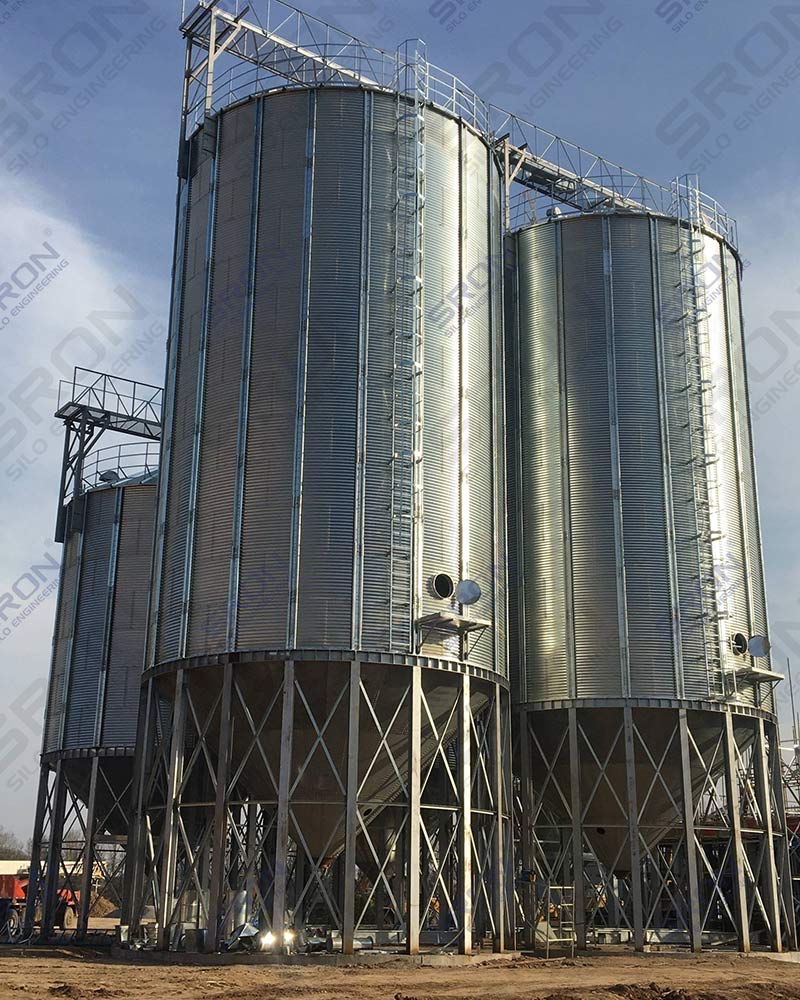What You Need to Know Before Storing Rice:
Rice is one of the most difficult foods to preserve because the rice has lost the protective layer of its skin and its nutrients are directly exposed. Therefore, it is sensitive to the influence of external temperature, humidity, and gas components. It has strong hygroscopicity, high bacterial load, and rapid metabolism of nutrients. It is easily prone to problems such as aging, mildew, insect damage, and quality deterioration. Especially under high temperature and high humidity conditions in summer, the rate of aging and mildew of rice accelerates, causing the acidity of rice to increase, the viscosity to decrease, and the rice losing its edible value.
Storing Rice in Grain Silo
Rice storage is an important link in the acquisition, transportation, processing, storage and sales of grain circulation. According to market demand, paddy is processed into rice, which is usually processed and sold at the same time. However, in some large and medium-sized cities, in order to ensure the year-round supply of rice, a certain amount of rice must be kept for turnover purposes, and a certain amount of reasonable inventory must be maintained. At this time, grain silos are needed to store rice to ensure a continuous supply of rice.
Grain steel silo is a grain storage device assembled with steel plates. It is usually used to store crops such as rice, wheat, and corn, and to maintain the quality and freshness of grain. Grain steel silos have the advantages of simple structure, easy use, moisture-proof and insect-proof, etc., ensuring the quality and long-term storage of grain. Grain silos can provide effective rice storage solutions. Through reasonable design and selection of durable steel plates, grain steel silos can ensure that the quality of rice is not affected and effectively avoid problems such as insect damage and mildew.
The Composition of Grain Silo:
Steel Plate: Mainly composed of galvanized steel plate, which has certain strength and durability.
Support Structure: Usually composed of various types of steel to support the entire silo structure.
Seals: Sealing strips or sealants are usually provided at the seams of the silo to ensure the sealing performance in the silo.
Ventilation System: Steel silos are usually equipped with ventilation equipment to maintain air circulation and prevent rice from getting wet and moldy.
Grain Unloading Equipment: Used to take grain out of the grain silo and transport it to where it is needed, including various conveyor belts, discharge ports, unloaders or various conveying equipment.
Temperature and Humidity Control Equipment: Used to monitor and adjust the temperature and humidity inside the grain silo to maintain the quality of the grain.
Fire-fighting and Insect-killing Equipment: Used to prevent fires and insect pests and ensure grain safety.
How to Achieve Safe Storage of Rice in Grain Silos:
Cleaning: The grain silo should be kept dry and clean, and debris and dust in the grain silo should be cleaned regularly to avoid the invasion of harmful microorganisms and insects.
Ventilation: Keep the grain silo well ventilated to maintain air circulation and prevent the rice from getting wet and moldy. At the same time, contact between rice and odorous substances should be avoided to prevent odors from being introduced into the rice.
Humidity: Rice needs to maintain appropriate humidity during storage, generally controlled between 20-60%. Too high humidity will cause the rice to absorb moisture and become moldy, while too low humidity will easily cause the rice to dry out.
Temperature: The storage temperature of rice should be kept within a relatively stable range. The appropriate storage temperature is 10-15 degrees Celsius. Excessive high or low temperatures should be avoided. Too high a temperature will cause the rice to absorb moisture and become moldy, while too low a temperature will easily make the rice hard.
Pest Control: Take pest control measures to prevent insects from invading rice. You can use pesticides or perform regular cleaning and disinfection. The grain silo must be rodent-proof to prevent mice from eating the rice.
Inspection and Maintenance: Regularly check whether the facilities and equipment of the grain silo are operating normally, discover and deal with possible problems in a timely manner, and ensure the safe storage of rice.

.jpg)

.jpg)